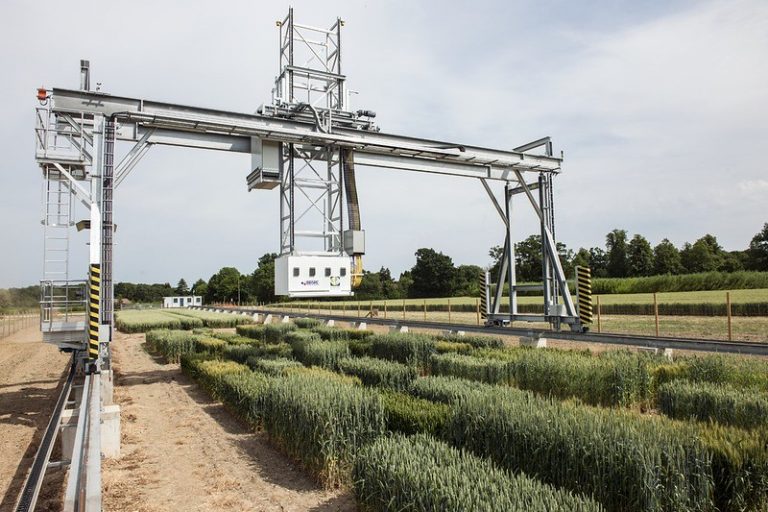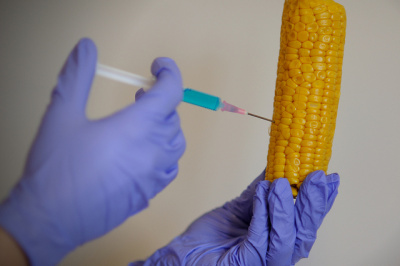Actualités
GMOs: a weakened regulatory framework

Over the past years, the implementation of the GMO legislation has been weakened with consequences disproportionate to the discretion with which the weakening occurred. Nearly every step upstream or downstream of the authorisation procedure of a GMO was scaled down. Was the aim to adapt to the progress of scientific knowledge or to anticipate the possibility that new techniques would be one day considered as producing GMOs subject to the legislation, as was decided by the Court of Justice this summer? Hard to tell…
The European Union is discussing the issue of new techniques of genetic modifications since 2007. This discussion reached a major milestone with the judgment of the Court of Justice of the European Union on July 25th. In that judgment, the Court ruled that organisms obtained through techniques of mutagenesis (whichever type of mutagenesis technique) are GMOs. The Court also said that GMOs obtained through techniques of mutagenesis whose safety has not been proven for a long time and which have not “conventionally been used in a number of applications” are fully subject to the obligations of the Directive [1].
Meanwhile, and possibly taking advantage of the red flag that was the debate on new techniques, the European Union has weakened some of the most important steps in the procedure to obtain a commercial authorisation. This procedure that can be summarized as follows: to be authorised, a GMO must first be assessed in terms of health and environmental risks, it must then be labelled and monitored which is why is to be detectable unambiguously. In order to implement this procedure, the European Union imposed a series of requirements which, in 2001, led one to believe it had the most advanced legislation in the world.
A legal simplification of the risk assessment
In 2013, the European Union adopted a new piece of legislation : Regulation 503/2013 [2]. This regulation specifies the rules laid down in Regulation 1829/2003 regarding the information the applicant has to provide in order for his GMO to be authorised, such as data pertaining to the assessment of health risks. In 2013, everyone thought this regulation was an improvement of the risk assessment as it was conducted until then. Indeed, among others, this regulation made toxicology analyses mandatory. But this was a hasty appraisal.
Precisely on toxicology analyses, Regulation 503/2013 enables the Commission to review the requirement of having to provide them on the basis of the results of the European research project called GRACE [3]. However, as Inf’OGM already reported in 2016, this project (criticized for conflicts of interest of some of its members and for its scientific work) concluded that the long-term analyses do not provide any additional scientific information compared to the 90-day feeding studies. It also concluded that the 90-day feeding studies do not “provide additional information […] when compared to the compositional comparison” [4]. Although the European Commission has not yet reviewed the requirement to provide toxicology analyses, it has the necessary arguments to do so today. On 11th September 2018, at a meeting of the Standing Committee on Plants, Animals, Food and Feed, the Member States and the European Commission discussed the follow-up to the GRACE project. During this meeting, the Commission agreed “that it would be put on the agenda of a forthcoming Standing Committee meeting”.
Regulation 503/2013 does not stop here. Article 5 potentially offers great possibilities to applicants: according to this article, applicants may not have to provide experimental data (molecular description, toxicological, nutritional, environmental analysis…) which should in principle accompany any application. Indeed, an application may to “not satisfy all the requirements« , for example if “particular information is not necessary owing to the nature of the genetic modification or of the product”, or if “it is not scientifically necessary” or even not “technically possible to supply such information”. There is only one constraint for companies: “the notifier shall submit reasoned justification for the derogation”. This the issue of the compatibility of article 5 with the precautionary principle, which must be taken into account in risk management in the European Union, arises. This is all the more so in the context of new mutagenesis techniques. The possibility to derogate from the requirement to provide experimental data for a risk assessment “owing to the nature of the genetic modification or of the product” could be particularly worrying as the industry and some governments already claim that nothing distinguishes these GMOs from plants obtained through “traditional” breeding.
But before asking ourselves how this possibility could be used for GMOs other than transgenic, it must be noted that this derogation is already used in the context of GMO applications containing several transformation events (so-called stacked GMOs) and their sub-combinations. For a stacked GMO ABCD, for example, the European Food Safety Authority (EFSA) delivers favourable opinions for the ABCD combination and part or all of its AB, BC, BCD, ACD sub-combinations, even though sometimes no experimental data is provided [5].
Legislative simplification of the administrative procedure
This recent move from EFSA happened gradually as Inf’OGM will report in a next article. Its origin doesn’t lie in the progress of scientific knowledge but in an administrative simplification of the processing of applications initiated by the European Commission.
Before 2008, applications for stacked GMOs were handled on a case-by-case basis. Let’s take once again the example of a GMO ABCD: GMOs A, B, AC, BC, BCD… were each the subject of a specific application. But around 2010, the European Commission began to deal with the ABCD GMO application as concerning also all or part of the possible sub-combinations. This led in 2013, for the first time, to an authorisation issued for the Monsanto and Dow AgroSciences maize Mon89034*1507*88017*59122 and all its sub-combinations, “independently of their origin” [6] [7]. The wording “independently of their origin” first appeared in the letters between the European Commission and EFSA between 2008 and 2013 and ended in Regulation 503/2013 adopted that same year.
Since 2013, either on their own initiative or at the express request of the European Commission, companies are filing applications for stacked GMOs and asking for the decision to also cover sub-combinations. In July 2017, five decisions authorised the marketing of 25 GMOs [8]. In August 2018, two authorisations covered 13 different GMOs [9]. These authorisations cover the stacked GMO and the sub-combinations appearing in the field. But they also cover the sub-combinations obtained by crossing through breeding programs, or generated in a laboratory by directly inserting several transformation events. At least, to be precise, nothing explicitly excludes the latter in the text!
An over-interpreted biological phenomenon
Recital 18 of Regulation 503/2013 is the expression of this administrative simplification. It states that “the harvest of segregating genetically modified plants (segregating crops) containing stacked transformation events contains various subcombinations of transformation events […] in order to ensure that authorisations are coherent with the products of which the placing on the market is unavoidable and for the feasibility of controls, the applications for genetically modified food and feed from segregating crops should include all subcombinations independently of their origin and not yet authorised”! But the latest decisions authorising a stacked GMO and its sub-combinations, adopted by the European Commission in August 2018, show that priority is given to the expression “independently of their origin” rather than the sub-combinations resulting from segregation in the field.
Combined with the simplification of risk assessment, this practice clearly makes things easier for companies that want to put GMOs on the market. And in addition, there is also the question of the data concerning the subcombinations. Regulation 503/2013 states that “the notifier shall provide a scientific rationale justifying that there is no need to provide experimental data for the concerned subcombinations or, in the absence of such scientific rationale, provide the experimental data” [10]. But the term “scientific rationale” is very broad and therefore leaves room for various interpretations, including by the experts of the European Food Safety Authority. One of them even issued a minority opinion twice in applications for the commercialisation of a stacked GMO and its sub-combinations because no experimental data concerning all or part of these sub-combinations combinations were provided, without this being supported by a serious “scientific rationale” according to the dissenting expert…
However, since 2018, this derogation also exists for authorisations submitted under Directive 2001/18 (cultivation of GMOs for commercial or experimental purposes), and no longer only for those submitted under Regulation 1829/2003. Directive 2018/350, whose aim is to update the environmental risk assessment criteria as defined in Directive 2001/18, states that “where the progeny of the GMO can contain various subcombinations of the stacked transformation events, the notifier shall provide a scientific rationale justifying that there is no need to provide experimental data for the concerned subcombinations, independently of their origin”! It should nonetheless be noted that Directive 2018/350 also states that “in the absence of such scientific rationale”, the notifier “shall provide the relevant experimental data” [11].
The icing on this “light” cake
Even though Regulation 503/2013 states in recital 18 that “applications for [GMOs] from segregating crops should include all subcombinations […] not yet authorised”, the recently issued decisions show that already allowed sub-combinations can be included. Therefore, when adopting its final decision, rather than excluding the already authorized sub-combinations, the European Commission sometimes repeals the previous authorisation decisions. Thus, a GMO AB [12] authorized in 2010 and which should have been the subject to a full application for renewal of the authorisation in 2019 at the latest, avoids having to go through the renewal procedure because of an authorisation given in 2016 for a GMO ABCD and its sub-combinations, including AB. What is the benefit for a company? A single expiry date and up to nine additional marketing years without having to file an additional application other than the one for the stacked GMO. And in nine years, if an application for a GMO ABCDE is submitted, the procedure can start again…
Some cheese before the dessert?
With the ongoing review of the “general principles and requirements of food law” (Regulation 178/2002) and of a set of regulations and directives, including those concerning GMOs, things may not stop here. As Inf’OGM already reported [13], the European Commission took the opportunity of this review to open the doors for GMO authorisations a little wider and to increase the confidentiality of data.
The first proposal of the European Commission? Enable companies to meet with EFSA before filing an application. There is indeed nothing better than agreeing beforehand on the content of an application in order to avoid the extension of the delay in the processing of the application…
But the European Commission also propose to expand the list of data accompanying an application for which confidentiality can be requested. Already today, some information may not be disclosed, in the name of protecting the company’s competitive position. But with the Commission’s proposal, confidentiality may also be sought if “the disclosure […] may be deemed, upon verifiable justification, to significantly harm the interests concerned”. And the confidentiality could be extended to information concerning the method that was used to obtain this plant or that plant! Yet, since 25th July, this information is crucial to apply the GMO status to products obtained through new mutagenesis techniques and to enable everybody to know what product he or she is dealing with or to link the product with the possible patent(s) that covers it.
In addition, following the Commission’s proposal, a company could also indicate that DNA sequence information and “breeding patterns and strategies” should not be disclosed.
This proposal is worrying given its potential consequences. If information concerning the method and the origin of the claimed traits of any new variety placed on the market is no longer public, whether this variety is or not a GMO, citizens and organisations won’t have the means to ensure that the commercialisation of a product derived from a GMO respects the relevant regulations!
What will happen to this European Commission proposal? We will have to wait for the discussions in the European Parliament to know that. But the minutes of the Standing Committee on Plants of 11th September 2018 are already quite striking. During this meeting, a Member State reported to the Committee that it had received a request from “an applicant [claiming] confidentiality of the full application dossier for authorisation”. The Commission replied that, according to Regulation 1829/2003, confidentiality can only relate to certain parts of the application, with due justification, but some companies are clearly feeling encouraged.
A digestive to feel better?
From this overview of the current and potential future developments, one could conclude that labelling remains the keystone of the European GMO law. This is not questioned for transgenic GMOs. However, it is for new GMOs. In order to be effective, the GMO labelling requirement depends in particular on the ability of the European Union and the Member States to control the conformity of labelled products and of those which are not labelled. But, as Inf’OGM has already explained, the European Commission announced on 11th September 2018 that it would “work” on the issue with the European network of GMO laboratories. Meanwhile, the European Union and its Member States have no common and validated control methods [14]. Therefore, they can not biologically control the products that may be marketed…
[1] .
[2] Commission Implementing Regulation (EU) No 503/2013 of 3 April 2013 on applications for authorisation of genetically modified food and feed in accordance with Regulation (EC) No 1829/2003 of the European Parliament and of the Council and amending Commission Regulations (EC) No 641/2004 and (EC) No 1981/2006.
[3] Article 12 of regulation 503/2013.
[4] .
[5] Maize Bt11*59122*Mir604*1507*Ga21 and EFSA’s opinion of 15 July 2016 are an illustration: or .
[6] .
[7] .
[8] .
[9] Decision for maize Mon89034*87427*NK603 and the sub-combinations Mon89034*87427, Mon89034*NK603 et 87427*NK603. Decision for maize TC1507*59122*Mon810*Nk603 and its sub-combinations TC1507*59122*Mon810, TC1507*59122*Nk603, TC1507*Mon810*Nk603, 59122*Mon810*Nk603, TC1507*59122, TC1507*Mon810, 59122*Mon810 and 59122*Nk603.
[10] Read note 5 as an example of implementation.
[11] Directive 2018/350, Annex, point 4c.
[12] See for example maize Bt11*Ga21 authorised in 2010, and then, in 2016 through the authorisation of maize Bt11*Mir162*Mir604*Ga21 : et .
[13] .
[14] .











